Abstract
On each of variable-ratio 10, 40, and 80 schedules of reinforcement, when rats' lever-pressing rates were stable, the concentration of a liquid reinforcer was varied within sessions. The duration of the postreinforcement pause was an increasing function of the reinforcer concentration, this effect being more marked the higher the schedule parameter. The running rate, calculated by excluding the postreinforcement pause, was unaffected by concentration. The duration of the postreinforcement pause increased with the schedule parameter, but the proportion of the interreinforcement interval taken up by the pause decreased. Consequently, the overall response rate was an increasing function of the schedule parameter; i.e., it was inversely related to reinforcement frequency, contrary to the law of effect. The running rate, however, decreased with the reinforcement frequency, in accord with the law of effect. When 50% of reinforcements were randomly omitted, the postomission pause was shorter than the postreinforcement pause, but the running rate of responses was not affected.
Keywords: reinforcement magnitude, postreinforcement pause, running rate, reinforcement omission, law of effect, variable ratio, rats
Full text
PDF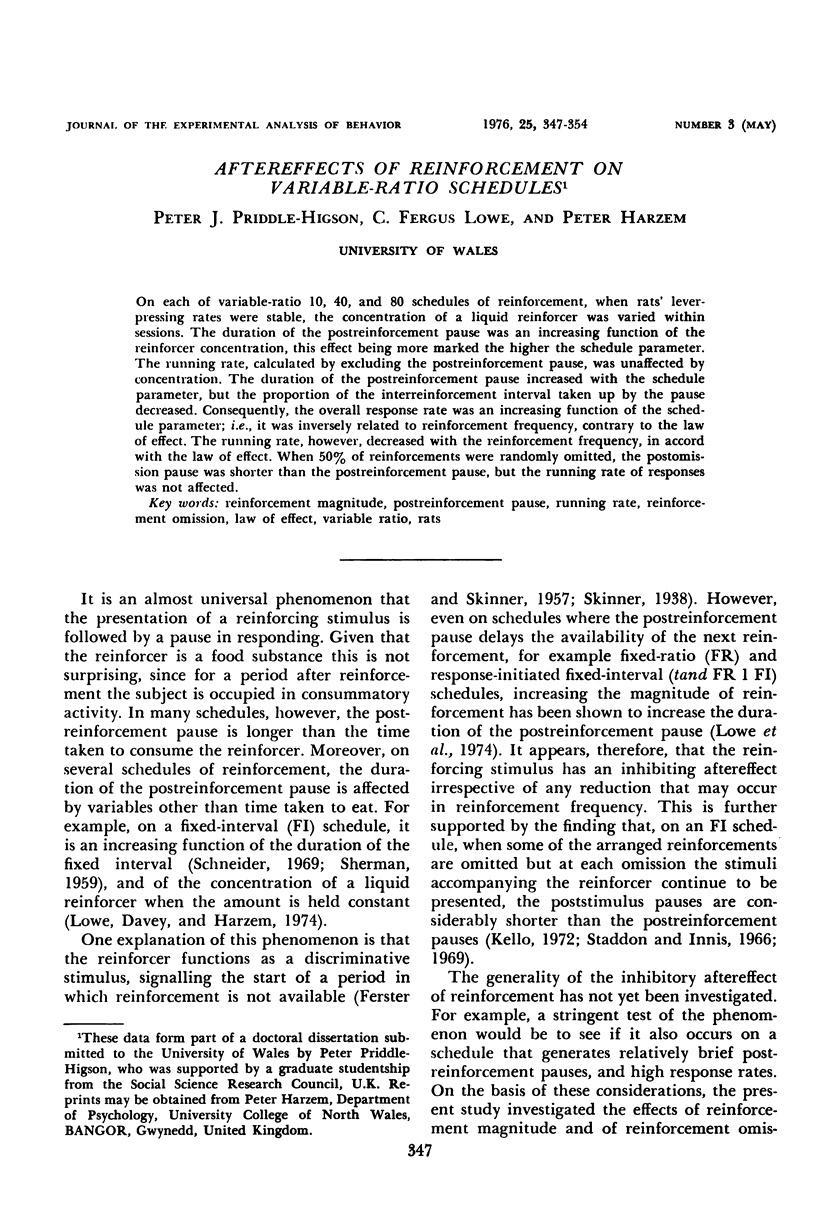
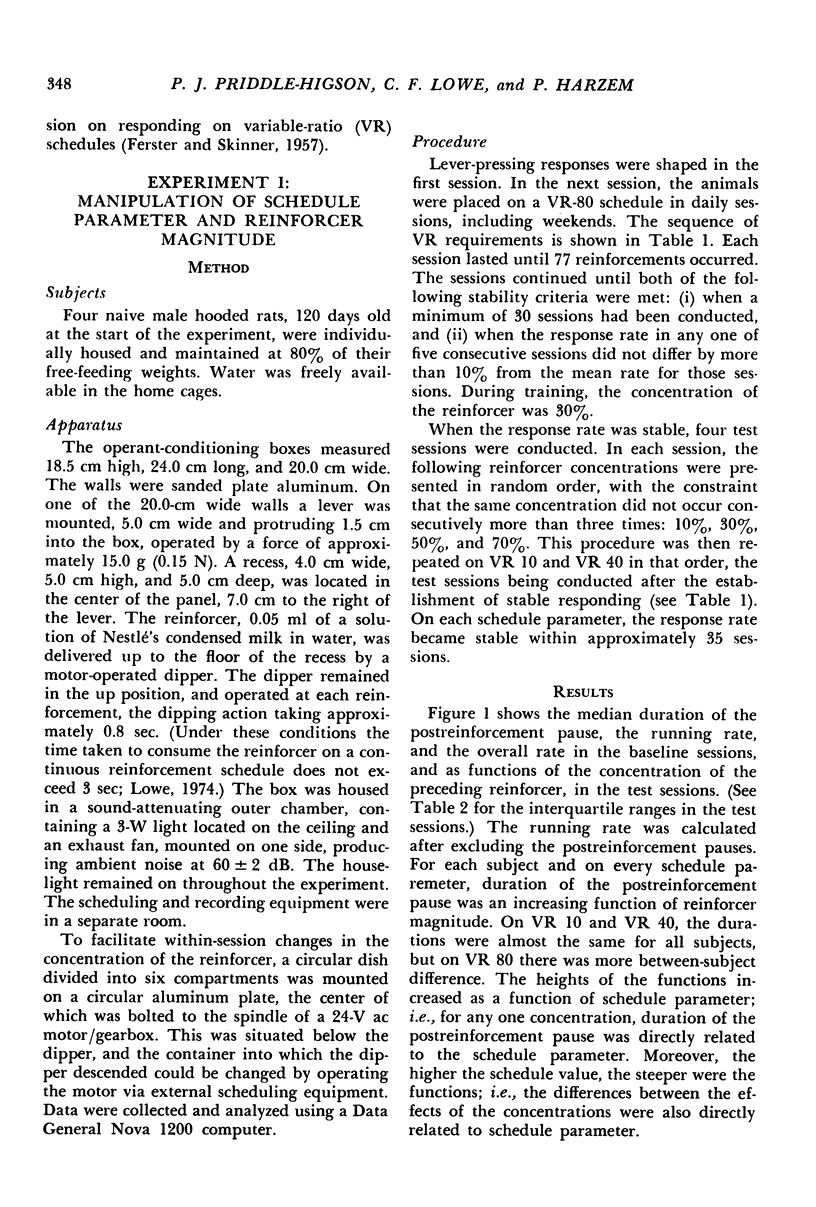
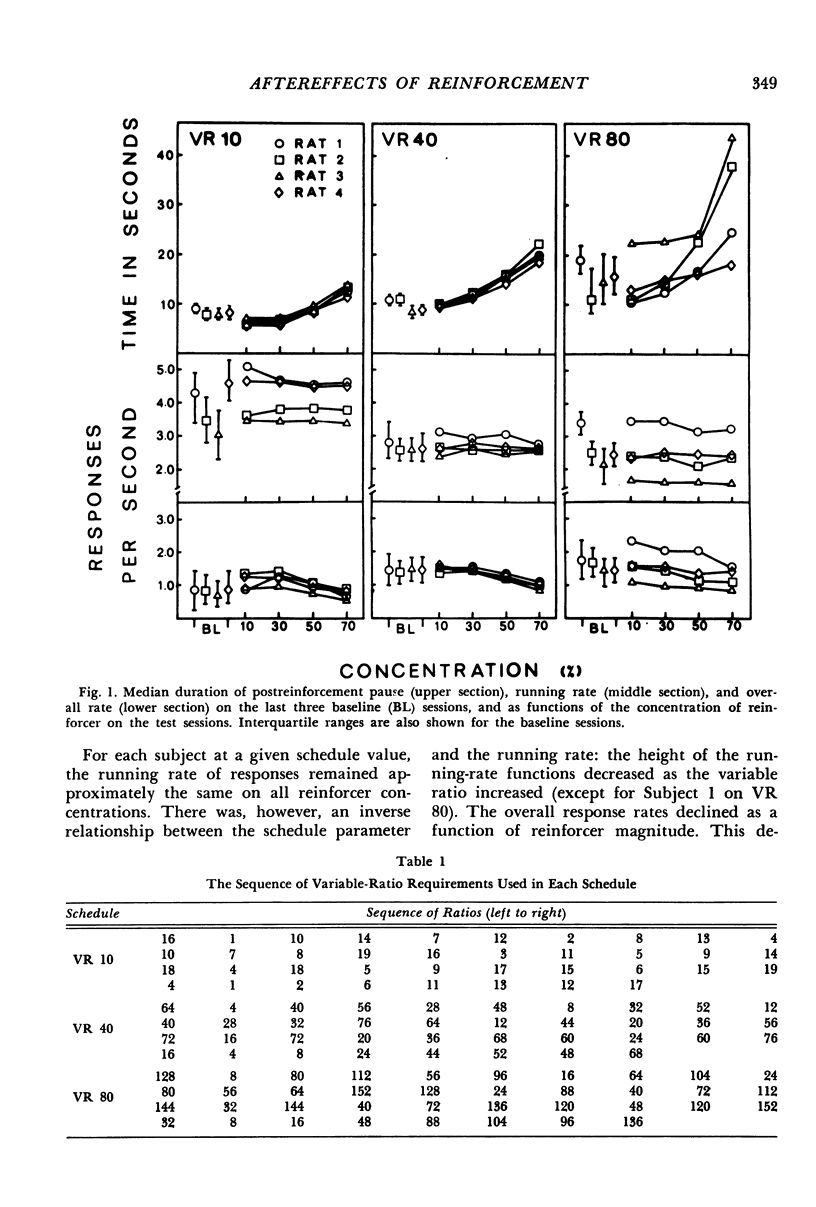


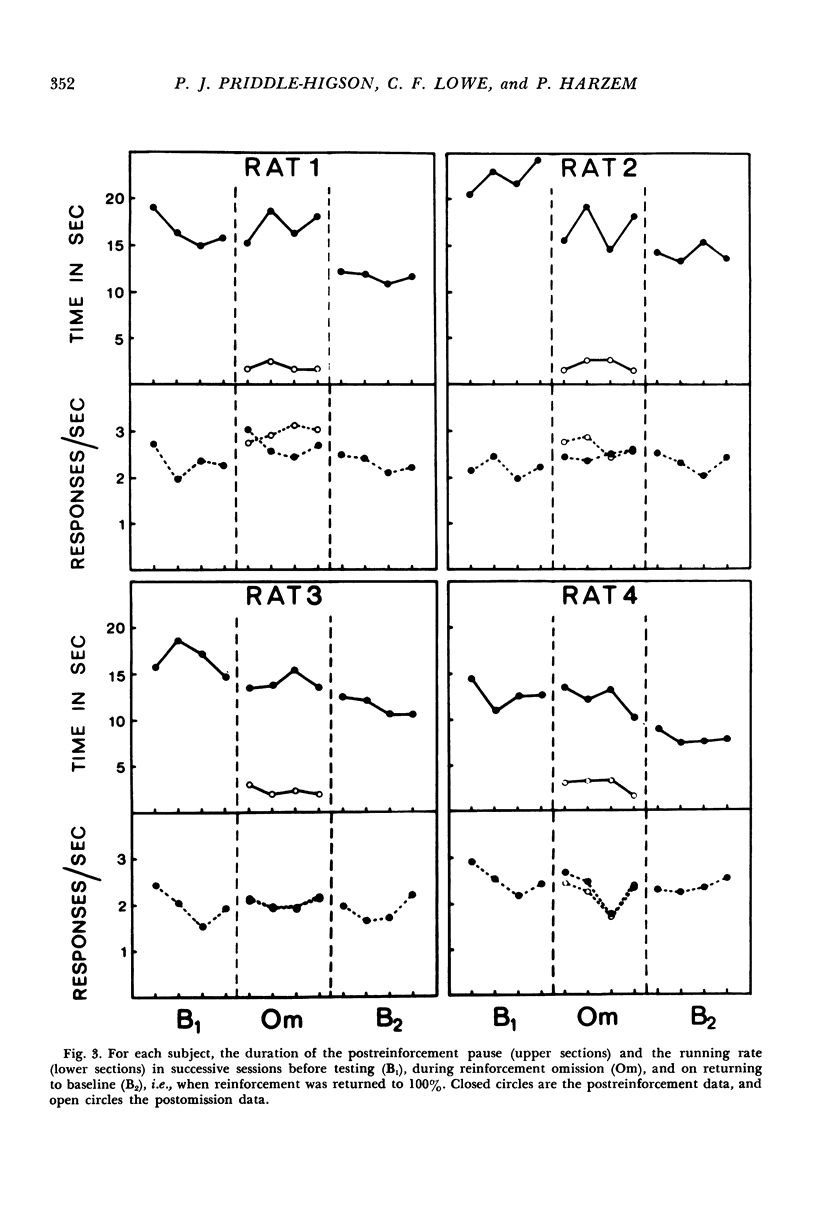

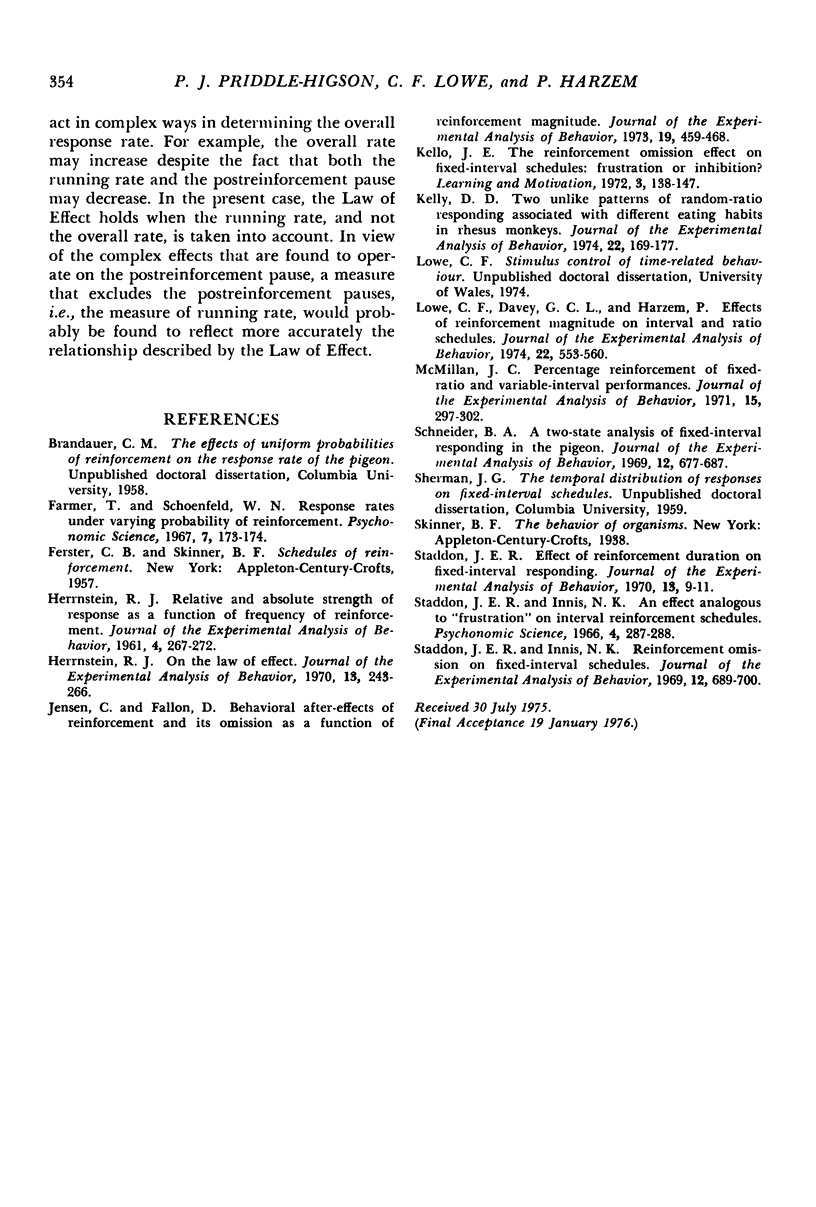
Selected References
These references are in PubMed. This may not be the complete list of references from this article.
- HERRNSTEIN R. J. Relative and absolute strength of response as a function of frequency of reinforcement. J Exp Anal Behav. 1961 Jul;4:267–272. doi: 10.1901/jeab.1961.4-267. [DOI] [PMC free article] [PubMed] [Google Scholar]
- Herrnstein R. J. On the law of effect. J Exp Anal Behav. 1970 Mar;13(2):243–266. doi: 10.1901/jeab.1970.13-243. [DOI] [PMC free article] [PubMed] [Google Scholar]
- Jensen C., Fallon D. Behavioral aftereffects of reinforcement and its omission as a function of reinforcement magnitude. J Exp Anal Behav. 1973 May;19(3):459–468. doi: 10.1901/jeab.1973.19-459. [DOI] [PMC free article] [PubMed] [Google Scholar]
- Kelly D. D. Two unlike patterns of random-ratio responding associated with different eating habits in rhesus monkeys. J Exp Anal Behav. 1974 Jul;22(1):169–177. doi: 10.1901/jeab.1974.22-169. [DOI] [PMC free article] [PubMed] [Google Scholar]
- Lowe C. F., Davey G. C., Harzem P. Effects of reinforcement magnitude on interval and ratio schedules. J Exp Anal Behav. 1974 Nov;22(3):553–560. doi: 10.1901/jeab.1974.22-553. [DOI] [PMC free article] [PubMed] [Google Scholar]
- McMillan J. C. Percentage reinforcement of fixed-ratio and variable-interval performances. J Exp Anal Behav. 1971 May;15(3):297–302. doi: 10.1901/jeab.1971.15-297. [DOI] [PMC free article] [PubMed] [Google Scholar]
- Schneider B. A. A two-state analysis of fixed-interval responding in the pigeon. J Exp Anal Behav. 1969 Sep;12(5):677–687. doi: 10.1901/jeab.1969.12-677. [DOI] [PMC free article] [PubMed] [Google Scholar]
- Staddon J. E. Effect of reinforcement duration on fixed-interval responding. J Exp Anal Behav. 1970 Jan;13(1):9–11. doi: 10.1901/jeab.1970.13-9. [DOI] [PMC free article] [PubMed] [Google Scholar]
- Staddon J. E., Innis N. K. Reinforcement omission on fixed-interval schedules. J Exp Anal Behav. 1969 Sep;12(5):689–700. doi: 10.1901/jeab.1969.12-689. [DOI] [PMC free article] [PubMed] [Google Scholar]


